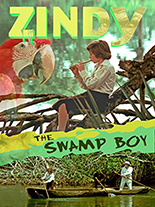
 In the de-evolution of humanity, Evel Knievel resides somewhere between P.T. Barnum and the dudes of Jackass. One of the more singular phenoms of 1970s pop-culture ephemera, Knievel carved out his own showbiz niche via death-defying motorcycle jumps over everything from the Caesars Palace fountains to the Snake River Canyon. He was equal parts professional wrestler, Vegas-era Elvis and Captain America all wrapped up in the fractured frame of a Montana-born huckster – the allure of which, such as it was, is nicely encapsulated in 1977’s Viva Knievel!, in which Evel plays a fictionalized version of himself.
In the de-evolution of humanity, Evel Knievel resides somewhere between P.T. Barnum and the dudes of Jackass. One of the more singular phenoms of 1970s pop-culture ephemera, Knievel carved out his own showbiz niche via death-defying motorcycle jumps over everything from the Caesars Palace fountains to the Snake River Canyon. He was equal parts professional wrestler, Vegas-era Elvis and Captain America all wrapped up in the fractured frame of a Montana-born huckster – the allure of which, such as it was, is nicely encapsulated in 1977’s Viva Knievel!, in which Evel plays a fictionalized version of himself.
It marks a somewhat sad swan song for Gordon Douglas, a better-than-average B-movie director best remembered for two other films with titles ending in exclamation points: the giant ant sci-fi Them! and They Call Me Mr. Tibbs!, the ill-begotten sequel to the Oscar-winning In the Heat of the Night. Douglas knows how to move a camera, so Viva Knievel! is imbued with a surprising level of competence, at least in terms of choreographing action.
The script, however, is a different story. It is replete with dialogue and situations as nuanced as an anvil dropped on one’s head, which might just be how screenwriters Antonio Santean and Norman Katkov prepped to get inside the mind of one Robert Craig Knievel. In terms of plot, suspense and characterization, it all plays out a little like a live-action version of a Scooby-Doo cartoon.
For his part, Evel is mostly convincing as himself, whom the movie depicts as a big-hearted lug with sideburns to match. What does it say when a guy who thought he could jump the Grand Canyon (a boast he thankfully never attempted) turns in a better performance than the ostensible actors? Lauren Hutton is especially ill-served as Evel’s love interest (!), while the rest of the cast – including Red Buttons, Leslie Nielsen, Frank Gifford and Marjoe Gortner – reads like a roster of Love Boat special guests,
Viva Knievel’s biggest head-scratcher is Gene Kelly as Evel’s aging mentor now fallen on hard times. Did Kelly have gambling debts during the ’70s? It is hard to understand why the then-65-year-old dance legend would subject himself to this humiliation but, then again, the guy did do Xanadu.
Yeah, I’m thinking gambling debts. —Phil Bacharach









